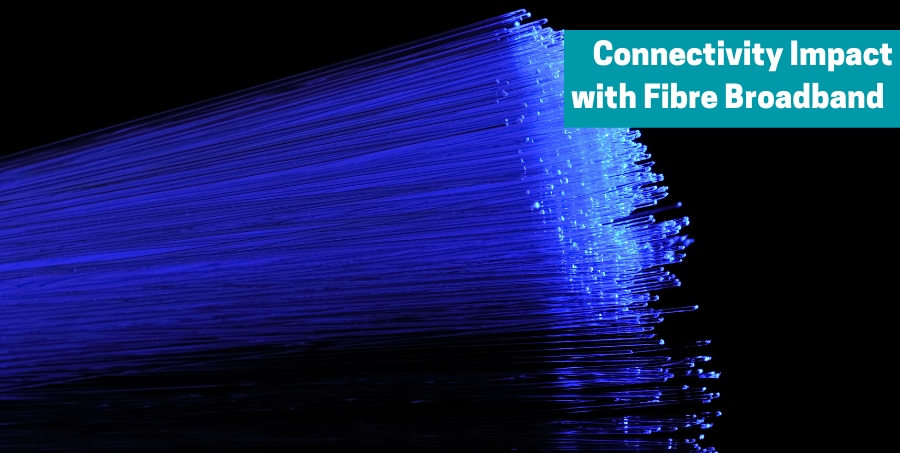How could fibre-optic broadband impact your connectivity?

Fibre-optic broadband (sometimes referred to only as fibre broadband), as its name implies, transmits digital signals, not through standard copper telephone cables but via fine filaments of glass or plastic. Here’s why that’s important: a standard coaxial “twisted pair” copper cable can carry six telephone calls simultaneously. But a single fibre optic pair can carry over 2.5 million telephone calls simultaneously.
You can begin to see the huge difference when you are aware of that fact. The much greater data transfer requirements of today’s advanced digital video streaming or gaming technologies do not comport well with standard copper cable ADSL (Asymmetrical Digital Subscriber Line) cables. There’s just not enough bandwidth in them to handle fast-growing contemporary consumer demands. Fibre optic cables, by contrast, have virtually unlimited bandwidths and are effectively “future safe”. At the very least, they’ll be in place as the preferred medium for data transfers for a very long time to come.
For people whose internet usage is minimal (like checking emails, watching the occasional YouTube video or online shopping), the attraction of this technology may not be especially strong. But if you’re in the habit of streaming films onto your HD screen, playing advanced online games or you live in a multiple-connected-device household, fibre optic connections are optimal. They’re also much more reliable (and faster) if you depend on your internet connection for a living.
While fibre-optic broadband still isn’t available everywhere in the UK, it’s steadily spreading in its reach. As things stand at present, 60% of UK homes are reachable by faster fibre-optic broadband with speeds of more than 151 Mbps.
How to get the maximum benefits from fibre-optic broadband
You won’t need a fancy new computer to benefit from fibre-optic broadband. You won’t even need any specific software. But if you’re struggling to get fast, uninterrupted, buffering-free internet connectivity wirelessly from your router, there’s a limit to how successful you’re likely to be.
Some practical steps can indeed help, but the fact is that the strength of your wireless broadband signal will be weakened by inevitable obstacles like walls and doors, and even microwave ovens and fairy lights on Christmas trees. If you’ve tried moving the router to an optimal location (preferably as high up as you can place it) and you’ve used a powerline adapter to boost the signal, and it’s still not reaching your devices properly, there is a simple, tried and tested solution: the Ethernet cable alternative.
Partly because they aren’t subject to interference from physical barriers like wireless signals, Ethernet cables are faster and more reliable than Wi-Fi. The speed of data transfer depends on the type of ethernet cable you use. A Cat6 and the later Cat6A cables, for example, can support 10 GB/s, but even a standard Cat5e will support up to 1 Gb/s.
Euronetwork manufactures premium quality bespoke network cables that you can depend on to deliver fast, stable and reliable signals to all your devices. They are available in Cat5e, Cat 6 and Cat6A standards. We also supply a range of premium quality pre-made Ethernet cables and extension leads in each of these categories, as well as Cat8.

